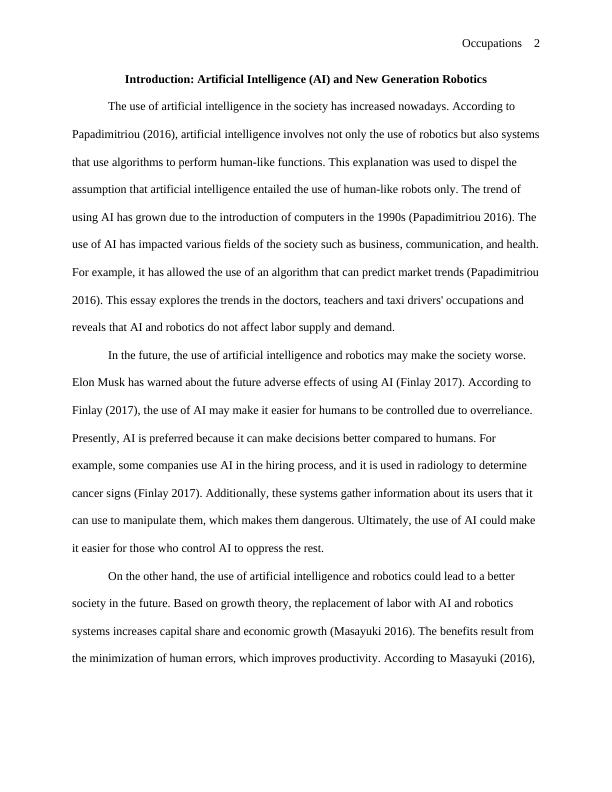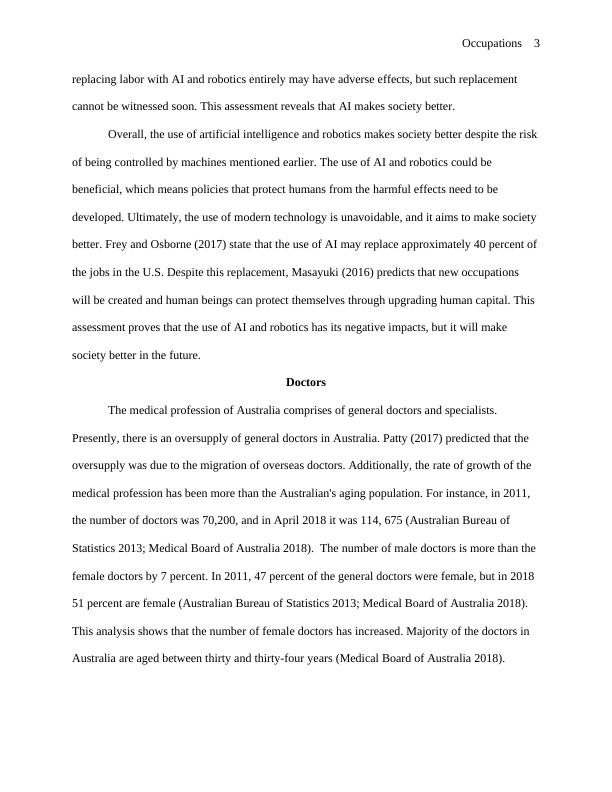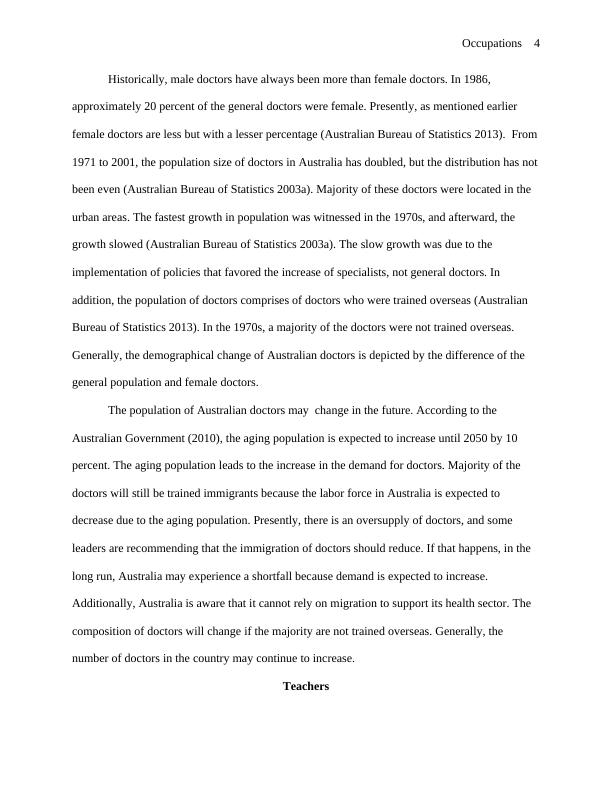Occupations in Australia: Trends in Doctors, Teachers, and Taxi Drivers
Holmes Institute Faculty of Higher Education offers the HC2101 Performance Management unit as part of its business, creativity, and ICT courses.
12 Pages3106 Words108 Views
Added on 2023-06-12
About This Document
This essay explores the trends in the doctors, teachers and taxi drivers' occupations in Australia and reveals that AI and robotics do not affect labor supply and demand. It also discusses the changes in the demand and supply of labor due to population changes and how organizations can change who they hire. The analysis shows that the number of female employees in all occupations has increased from the 1970s to the present, and that population affects the workforce. The government controls the supply and demand of labor in most professions, and managers should use this knowledge to advocate for the use of technology.
Occupations in Australia: Trends in Doctors, Teachers, and Taxi Drivers
Holmes Institute Faculty of Higher Education offers the HC2101 Performance Management unit as part of its business, creativity, and ICT courses.
Added on 2023-06-12
ShareRelated Documents
End of preview
Want to access all the pages? Upload your documents or become a member.
Occupations in Australia: Trends in Doctors, Teachers, and Taxi Drivers
|6
|315
|74
Impact of AI and Robotics on Professions: A Case Study
|10
|3726
|32
Technological Change and its Impact on HRM Activities
|12
|838
|291
Artificial and Robots Assignment PDF
|14
|3509
|108
Performance Management for HR Assignment
|16
|3788
|164
Robots and Artificial Intelligence - PDF
|11
|818
|163




